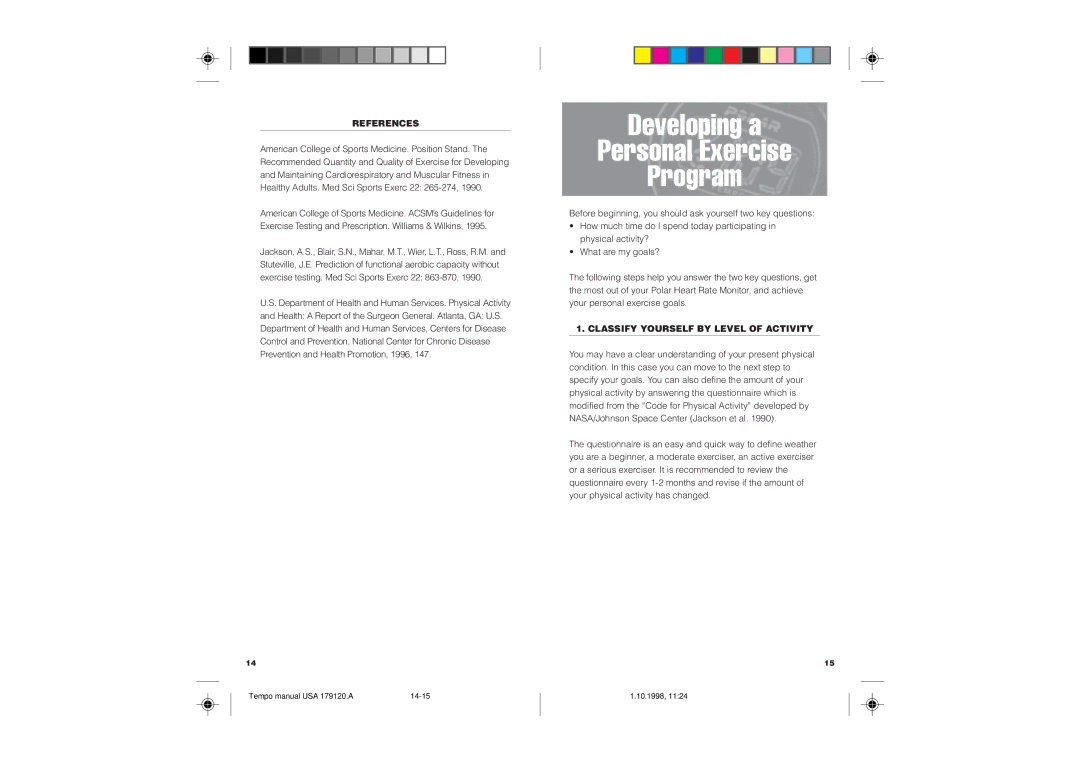
REFERENCES
American College of Sports Medicine. Position Stand. The Recommended Quantity and Quality of Exercise for Developing and Maintaining Cardiorespiratory and Muscular Fitness in Healthy Adults. Med Sci Sports Exerc 22:
American College of Sports Medicine. ACSM’s Guidelines for Exercise Testing and Prescription. Williams & Wilkins, 1995.
Jackson, A.S., Blair, S.N., Mahar, M.T., Wier, L.T., Ross, R.M. and Stuteville, J.E. Prediction of functional aerobic capacity without exercise testing. Med Sci Sports Exerc 22:
U.S. Department of Health and Human Services. Physical Activity and Health: A Report of the Surgeon General. Atlanta, GA: U.S. Department of Health and Human Services, Centers for Disease Control and Prevention, National Center for Chronic Disease Prevention and Health Promotion, 1996, 147.
Developing a
Personal Exercise
Program
Before beginning, you should ask yourself two key questions:
•How much time do I spend today participating in physical activity?
•What are my goals?
The following steps help you answer the two key questions, get the most out of your Polar Heart Rate Monitor, and achieve your personal exercise goals.
1. CLASSIFY YOURSELF BY LEVEL OF ACTIVITY
You may have a clear understanding of your present physical condition. In this case you can move to the next step to specify your goals. You can also define the amount of your physical activity by answering the questionnaire which is modified from the “Code for Physical Activity” developed by NASA/Johnson Space Center (Jackson et al. 1990).
The questionnaire is an easy and quick way to define weather you are a beginner, a moderate exerciser, an active exerciser or a serious exerciser. It is recommended to review the questionnaire every
14 | 15 |
Tempo manual USA 179120.A |
1.10.1998, 11:24
